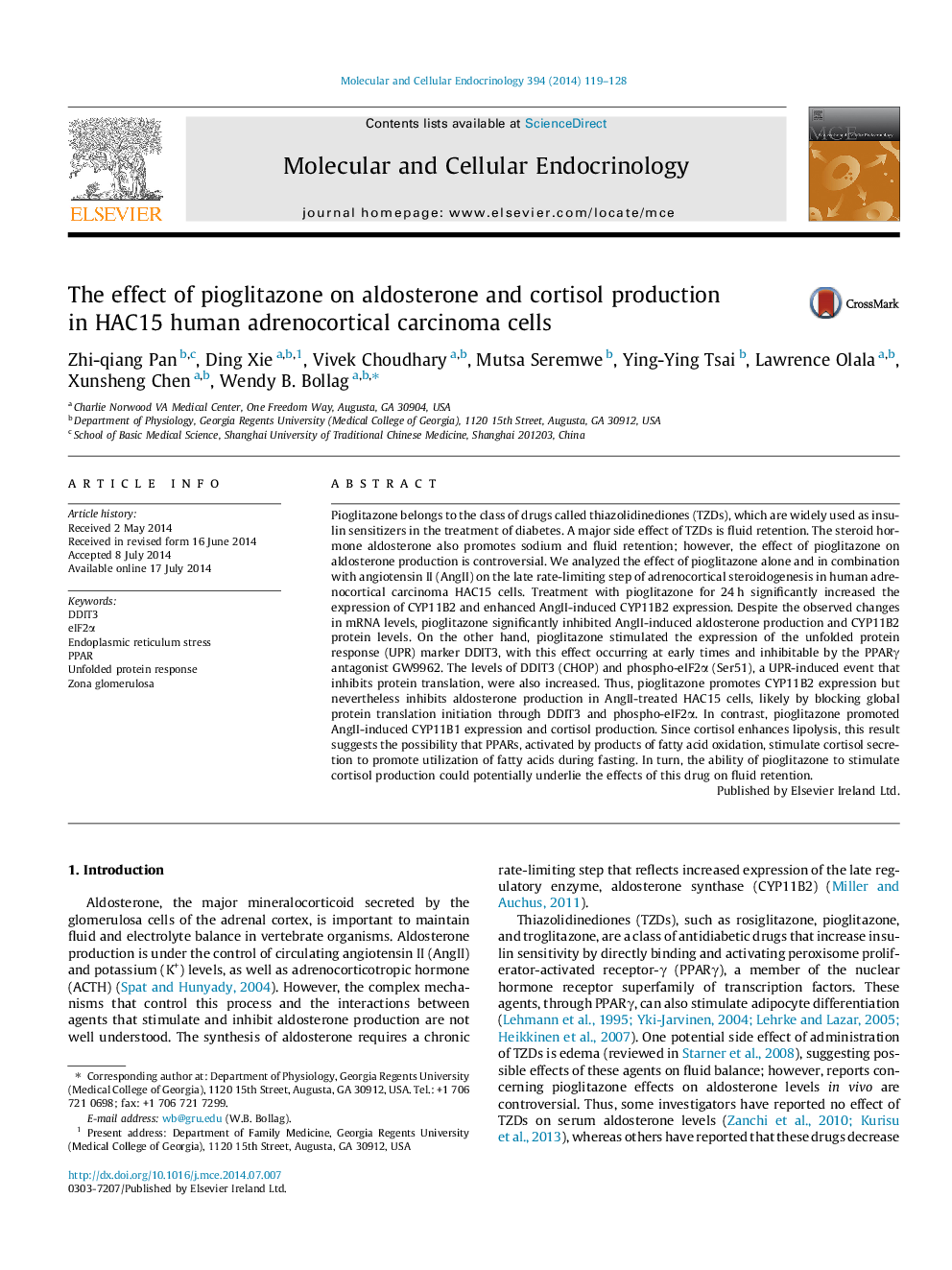| Article ID | Journal | Published Year | Pages | File Type |
|---|---|---|---|---|
| 2195938 | Molecular and Cellular Endocrinology | 2014 | 10 Pages |
•Pioglitazone inhibits aldosterone production despite increasing CYP11B2 mRNA levels.•Pioglitazone causes ER stress, induces DDIT3 and increases eIF2α phosphorylation.•Pioglitazone-inhibited CYP11B2 protein levels are likely due to the induced ER stress.•Pioglitazone induces CYP11B1 and StAR expression and enhances cortisol synthesis.•Cortisol may cooperate with PPAR activated by lipid metabolites to regulate fat usage.
Pioglitazone belongs to the class of drugs called thiazolidinediones (TZDs), which are widely used as insulin sensitizers in the treatment of diabetes. A major side effect of TZDs is fluid retention. The steroid hormone aldosterone also promotes sodium and fluid retention; however, the effect of pioglitazone on aldosterone production is controversial. We analyzed the effect of pioglitazone alone and in combination with angiotensin II (AngII) on the late rate-limiting step of adrenocortical steroidogenesis in human adrenocortical carcinoma HAC15 cells. Treatment with pioglitazone for 24 h significantly increased the expression of CYP11B2 and enhanced AngII-induced CYP11B2 expression. Despite the observed changes in mRNA levels, pioglitazone significantly inhibited AngII-induced aldosterone production and CYP11B2 protein levels. On the other hand, pioglitazone stimulated the expression of the unfolded protein response (UPR) marker DDIT3, with this effect occurring at early times and inhibitable by the PPARγ antagonist GW9962. The levels of DDIT3 (CHOP) and phospho-eIF2α (Ser51), a UPR-induced event that inhibits protein translation, were also increased. Thus, pioglitazone promotes CYP11B2 expression but nevertheless inhibits aldosterone production in AngII-treated HAC15 cells, likely by blocking global protein translation initiation through DDIT3 and phospho-eIF2α. In contrast, pioglitazone promoted AngII-induced CYP11B1 expression and cortisol production. Since cortisol enhances lipolysis, this result suggests the possibility that PPARs, activated by products of fatty acid oxidation, stimulate cortisol secretion to promote utilization of fatty acids during fasting. In turn, the ability of pioglitazone to stimulate cortisol production could potentially underlie the effects of this drug on fluid retention.
